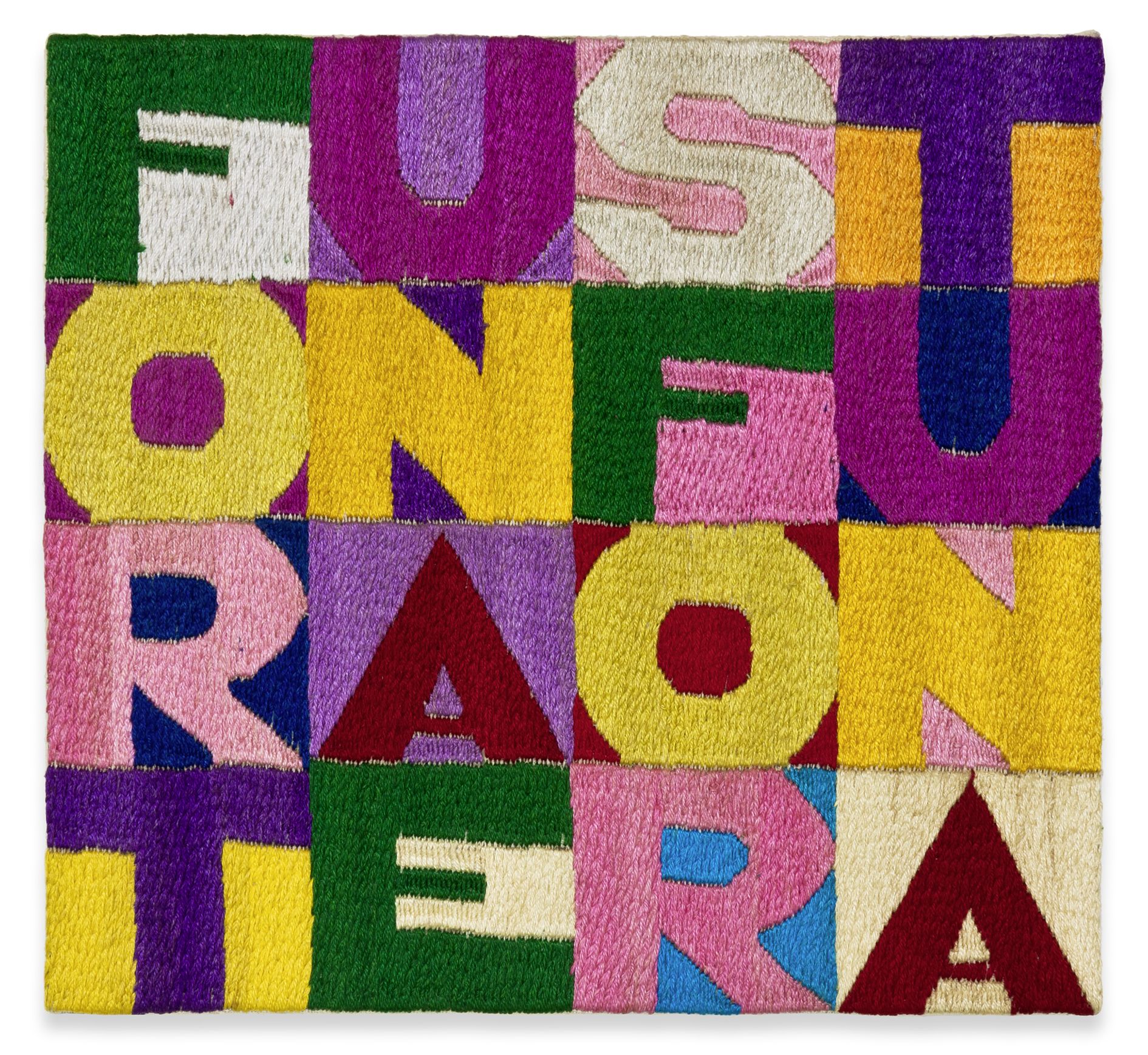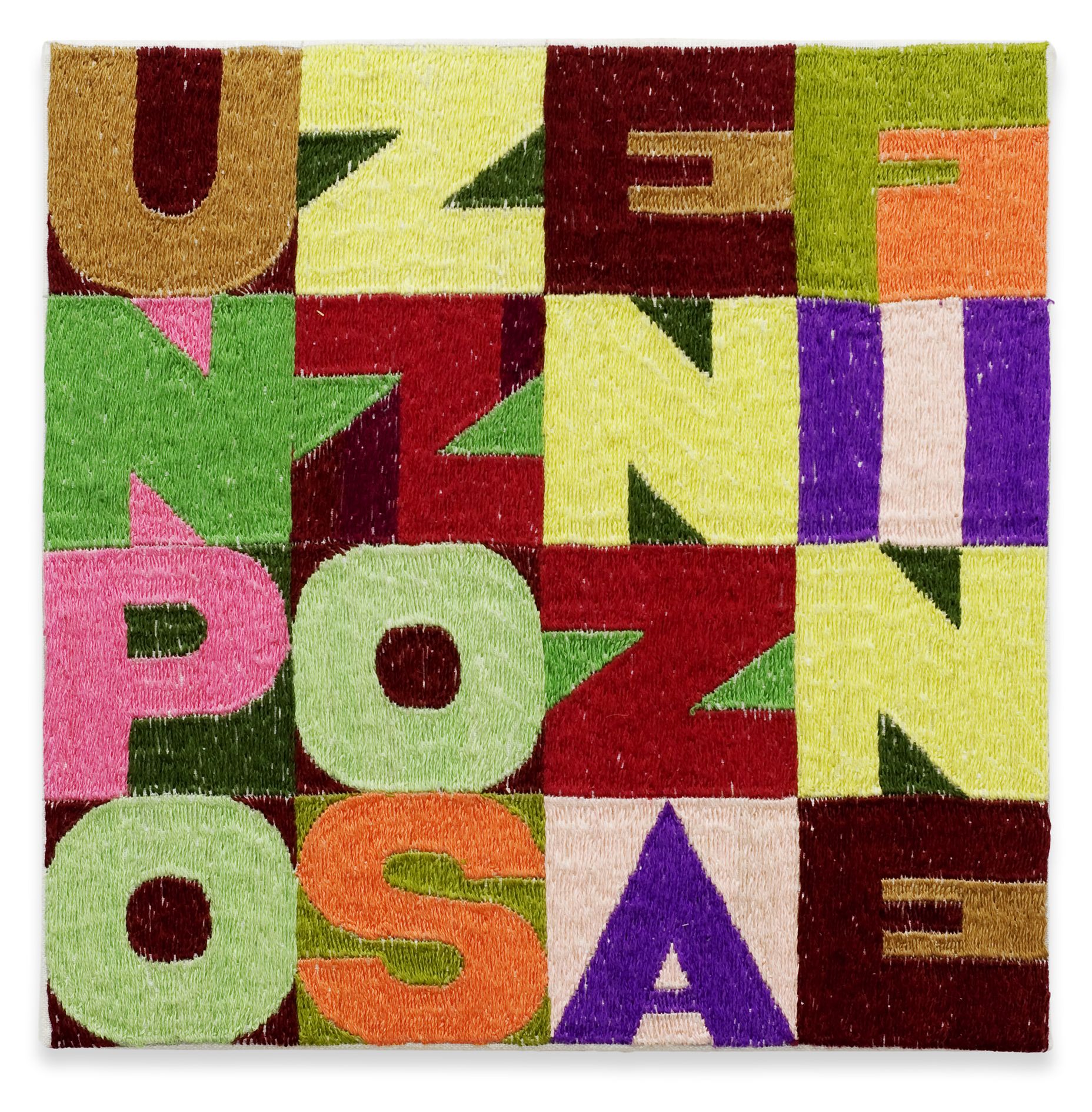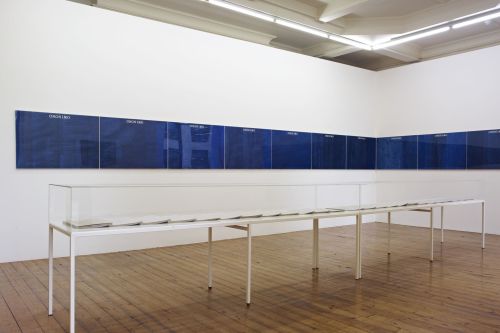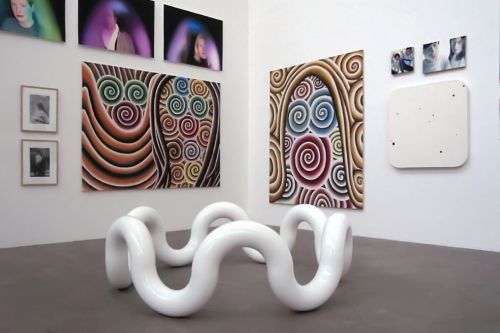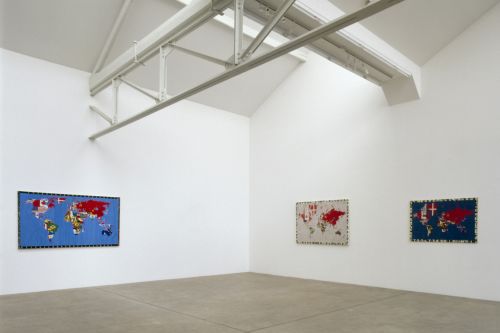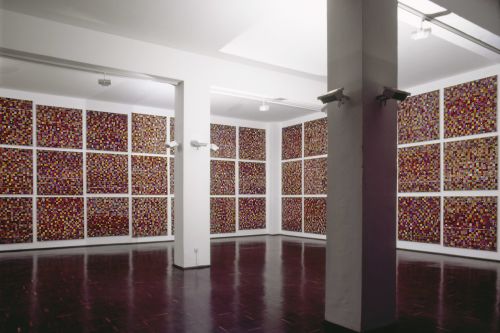Alighiero Boetti (1940–94) is one of the most important figures in post-war contemporary art and in the history of Italian art more generally. Rising to prominence in the 1960s and originally tied to the Arte Povera movement, Boetti later sought to distance himself from his compatriots and by the start of the 1970s was undertaking investigations into a string of dualities, from order and disorder, to indeterminacy and logic, and classification and boundlessness. Through drawing, painting, sculpture, embroidery, weaving, mail art and conceptual practices, Boetti engaged himself with an unpredictable and expanding global perspective.

Alighiero Boetti
Insecure Unconcerned
March 29–May 25, 2024
New York
At the core of Alighiero Boetti’s inventive and conceptually rigorous practice lies a philosophical interest in the liminal space between polarities. Raising existential questions centered around the theme of ordine e disordine (order and disorder), his modern parables and metaphors playfully delve into the complexities and contradictions of the human condition.
Monika Sprüth and Philomene Magers are honored to present Insecure Unconcerned, a solo exhibition of works by Boetti, on the occasion of the thirtieth anniversary of the artist’s death. The show at the New York gallery is dedicated to the late Pasquale Leccese, a close friend of Boetti’s and curator of the artist’s previous presentations with the gallery: Early Works, Sprüth Magers, London (2003) and Works 1966–88, Sprüth Magers, Munich (2002). Before he died last year, Leccese was planning to curate Insecure Unconcerned in celebration of Boetti. Comprising artworks from four decades and providing an overview of his seminal oeuvre, the exhibition will include Insicuro Noncurante (1966–75), Tutto (1988) and Mappa (1989), “Biro” drawings (1975–78), selected “Arazzi” (1977–94), and Aerei (1983–89), alongside rich archival material.
Learn more



%20and%20faded%20portrait%20against%20white%20background)

























%20and%20faded%20portrait%20against%20white%20background)







